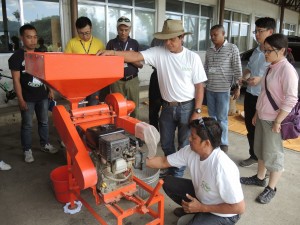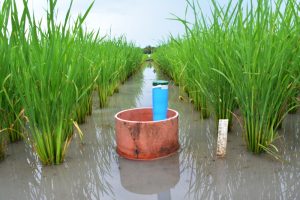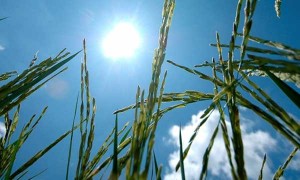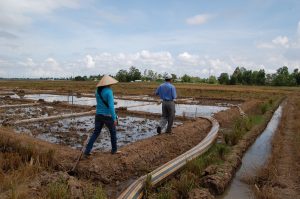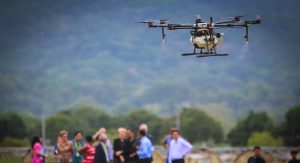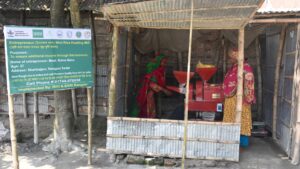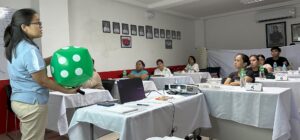A research group, which includes the Institute of Environmental Biotechnology at Graz University of Technology, has identified bacterium inside the rice seed that can provide resistance to Burkholderia plantarii.
B. plantarii is a rice-pathogenic bacterium that causes seedling blight. In rice seedlings, the symptoms of the disease include chlorosis, stunting, and root growth inhibition.
According to the researchers, the presence of the bacterial genus Sphingomonas in the seeds inhibits the pathogen making the plant resistant to the disease.
Read the full story at Science Daily
More on biological control of rice pests:
Tiny wasps protect rice in the Mekong
Trichogramma are tiny beneficial wasps that feed on the eggs of several pests, including stemborers and leaffolders. To help rice farmers in the Greater Mekong Region, a project was launched in 2011 to promote the establishment of Trichogramma mass production facilities and affordable and practical pest control methods. These wasps are less than one millimeter long—their tiny size can be attributed to their specific life history as they develop inside the eggs of herbivorous insects, particularly moths. Trichogramma wasps will feed on the eggs of several moth species, but in rice, they mostly attack the eggs of stemborers and leaffolders—two insect pests feared most by farmers.
Striking a balance through ecologically engineered rice ecosystems
As our truck bounces down the narrow muddy track toward the Alubog family farm in Colonia, Bukidnon, Philippines, a huge irrigation canal, charged by the recent heavy rains, roars beside the road. The morning sun is heating up, clearing the low-lying mist to reveal a strange new landscape: a cluster of towering green pillars like the neatly arranged leafy temples of an abandoned jungle city is punctuated across the farm. These new structures, which first appeared in late 2013, are part of an effort to promote ecological balance in rice fields. Technically referred to as high-diversity vegetation patches, they offer refuge to a range of beneficial insects, spiders, and birds that protect the neighboring rice from hungry pests. The patches also provide farmers with fruits and vegetables, including okra, string beans, and bitter gourds that are consumed by the farming household or sold in the local markets.
Letting nature manage its battles
The efforts to manage rice pests such as planthoppers have taken on a simple message: let nature have its way in your fields. In essence, leave the friendlies such as spiders, predatory bugs, and parasitic wasps alone, and you increase rice’s chances against planthopper outbreaks. As straightforward as the message is, doing away with old-time practices of finding assurance from insecticides is not. In a statement calling for support on pesticide regulation and for a ban in the use of specific insecticides in rice that contribute to planthopper outbreaks, IRRI has offered alternative practices to better manage pests and has called on its partners to join its concerted efforts to change mindsets.

